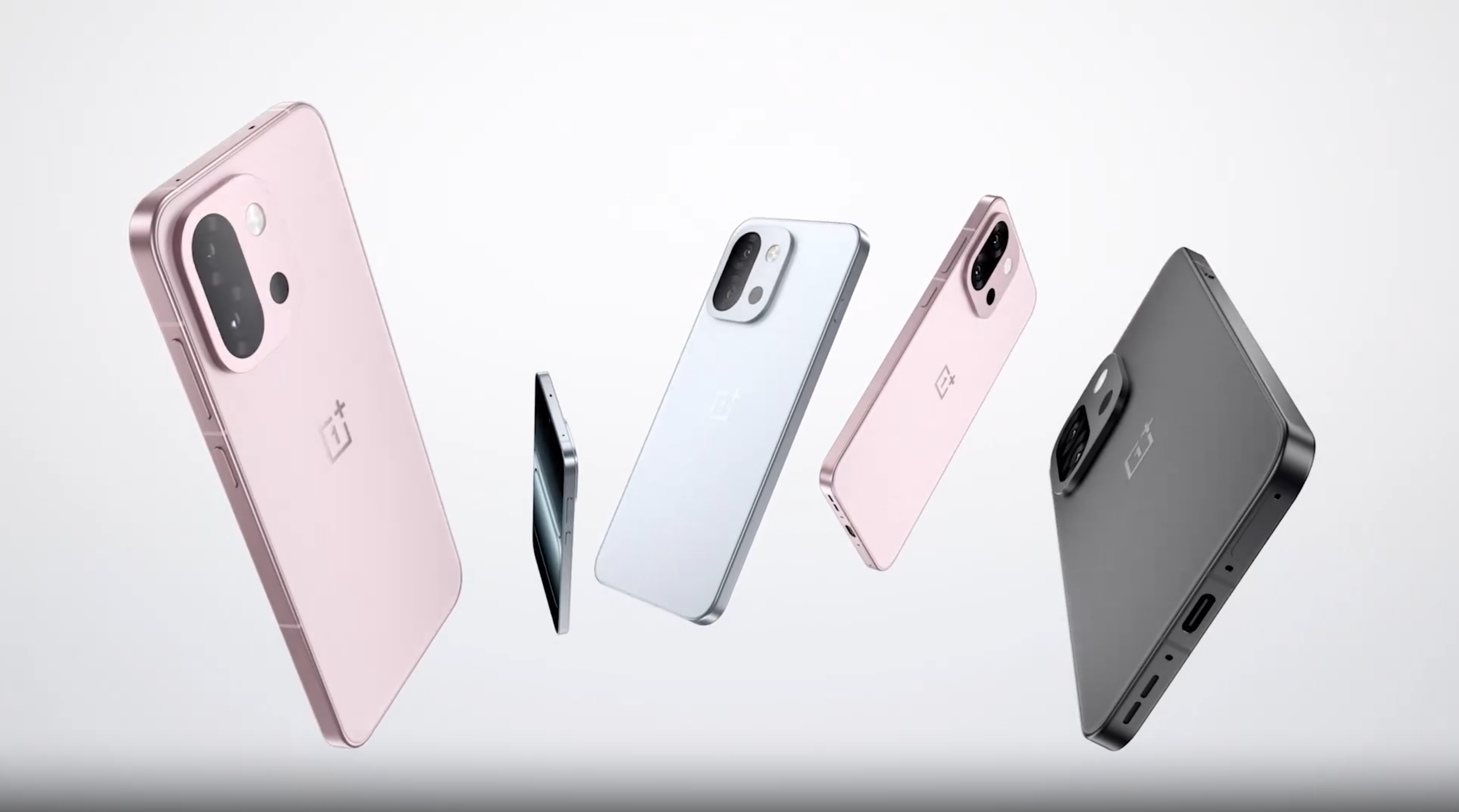Tom's Guide Verdict
The Xiaomi Mi 10 Pro 5G is a compelling alternative to Samsung's Galaxy S20 and S20 Plus with a battery that lasts much longer. However, its limited availability and incompatibility with some U.S. networks make it a risky import.
Pros
- +
Smooth, captivating display
- +
Strong performance
- +
Fantastic battery life
- +
Unique camera
- +
Great haptics
Cons
- -
Expensive
- -
Not available in the U.S. or U.K.
- -
Poor speaker placement
- -
Not IP-rated water resistant
- -
Too much bloatware
Why you can trust Tom's Guide
Xiaomi is a name that’s likely unfamiliar to many smartphone buyers in the West. The Chinese firm’s handsets have never been officially sold in the U.S. — the new Xiaomi Mi 10 Pro 5G is no exception — and the full range of products the company offers typically don’t make it past Asia. But those who have heard of Xiaomi know that the company has earned a reputation for quality at a cut-rate price.
Price: €999 (~$1,080, £870)
OS: Android 10 with MIUI 11
Display: 6.67-inch OLED (2340x1080; 90 Hz)
CPU: Snapdragon 865
RAM: 8GB
Storage: 256GB; not expandable
Rear camera: Quad-lens: 108MP wide (ƒ/1.7), 20MP ultrawide (ƒ/2.2); 12MP “portrait” 2X telephoto (ƒ/2.0); 8MP 10X lossless telephoto (ƒ/2.0)
Front camera: 20MP (ƒ/2.0)
Battery: 4,500 mAh
Size: 6.40 x 2.94 x 0.35 inches
Weight: 7.34 ounces
Right off the bat, let’s make one thing clear: The Xiaomi Mi 10 Pro 5G is indeed a quality phone, but it’s not being sold at a cut-rate price. Last year’s Mi 9 Pro cost the rough equivalent of $520; the Mi 10 Pro 5G is priced at €999, which translates to $1,080. If OnePlus moved to a richer part of town by bumping its prices with the OnePlus 8 and OnePlus 8 Pro, then Xiaomi just bought a mansion.
But the Mi 10 Pro 5G doesn’t feel like it came from a company that doesn’t know how to build an expensive, exquisite product. In fact, Xiaomi’s phone is every bit as polished and complete as the Samsung Galaxy S20 Plus.
However, it’s also not without its quirks. And even though it lasts remarkably long on a charge, has a beautiful display and takes a unique (and mostly successful) approach to camera hardware, the Mi 10 Pro 5G’s high price, difficulty to buy and overwrought software keep it from making our list of the best phones — very good though it is.
Xiaomi Mi 10 Pro 5G review: Pricing and availability
The Xiaomi Mi 10 Pro 5G isn’t sold in the U.S. or U.K., though it is available in Europe, where it costs €999 and only comes in one configuration with 256GB of storage and 8GB of RAM. There is no microSD slot to expand storage on this device.
Therefore, if you live in either the U.S. or U.K. and would like to own a Mi 10 Pro 5G, you’ll have to import an international model from a site like Giztop. As always with international models of phones, you’ll have to ensure the bands it can connect to align with those used by your carrier of choice.
Our Mi 10 Pro 5G had no issues connecting to T-Mobile’s LTE network, though the device isn’t wired to receive every single band the Uncarrier utilizes. This may result in some lacking coverage in certain parts of the country. Additionally, while the Mi 10 Pro 5G supports sub-6GHz 5G, it couldn’t connect to T-Mobile’s nationwide 5G network during our testing, so we couldn’t enjoy the benefits of faster connectivity.
Xiaomi Mi 10 Pro 5G review: Design
While testing the Xiaomi Mi 10 Pro 5G, I frequently compared it against Samsung’s Galaxy S20 Plus. Both phones are sized similarly, cost about the same and sport an identical number of camera lenses on the back, so it seemed like an appropriate pairing, even if Samsung’s phone costs a little bit more. Our S20 Plus is of the Aura Blue variety, and Xiaomi calls the shade of our Mi 10 Pro 5G review unit Solstice Grey — which is odd, because it definitely comes across as blue to my eyes.
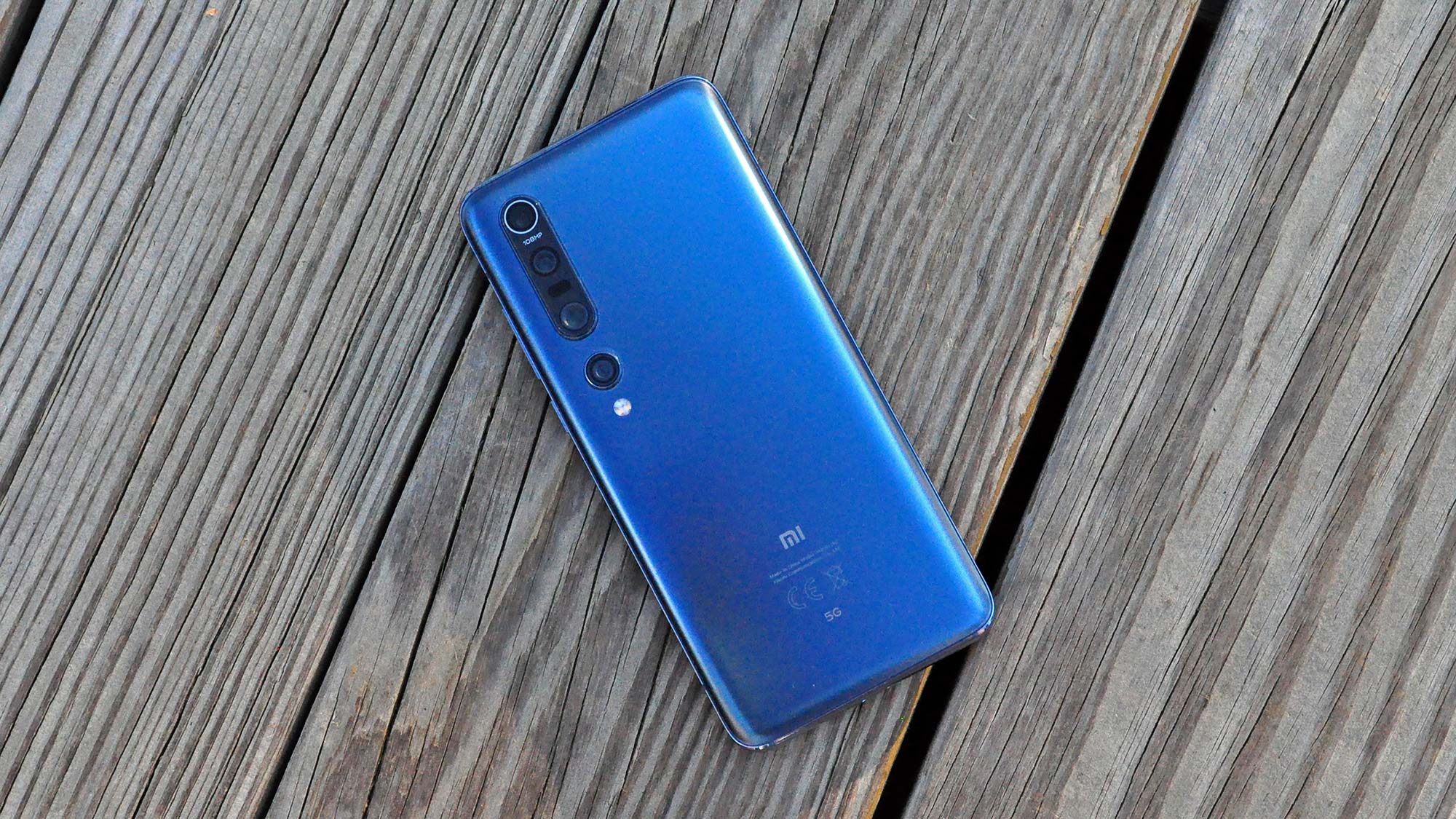
Frequently I’d have both phones face up on my desk, and when I’d go to reach for one, oftentimes and much to my surprise, I’d mistakenly pick up the other. I often gripe that flagship smartphones these days all look the same, but the resemblance these devices share is unlike anything I’ve encountered before. The only immediate giveaway is that the Mi 10 Pro 5G is heavier than the S20 Plus by about seven-tenths of an ounce, which you can definitely feel.

None of this is to say the Mi 10 Pro 5G’s design is disappointing, necessarily — just very familiar. It has that copycat aluminum frame you see on lots of Android flagships these days, that gets all thin in the middle and flares out as it approaches the top and bottom. You’ve got your two slabs of curved glass, with the one on the back bearing a pleasing matte finish, and a quartet of camera lenses broken into an unusual cluster — three lined in a pill-shaped module, and the ultrawide lens all by its lonesome quite a way down from the rest.
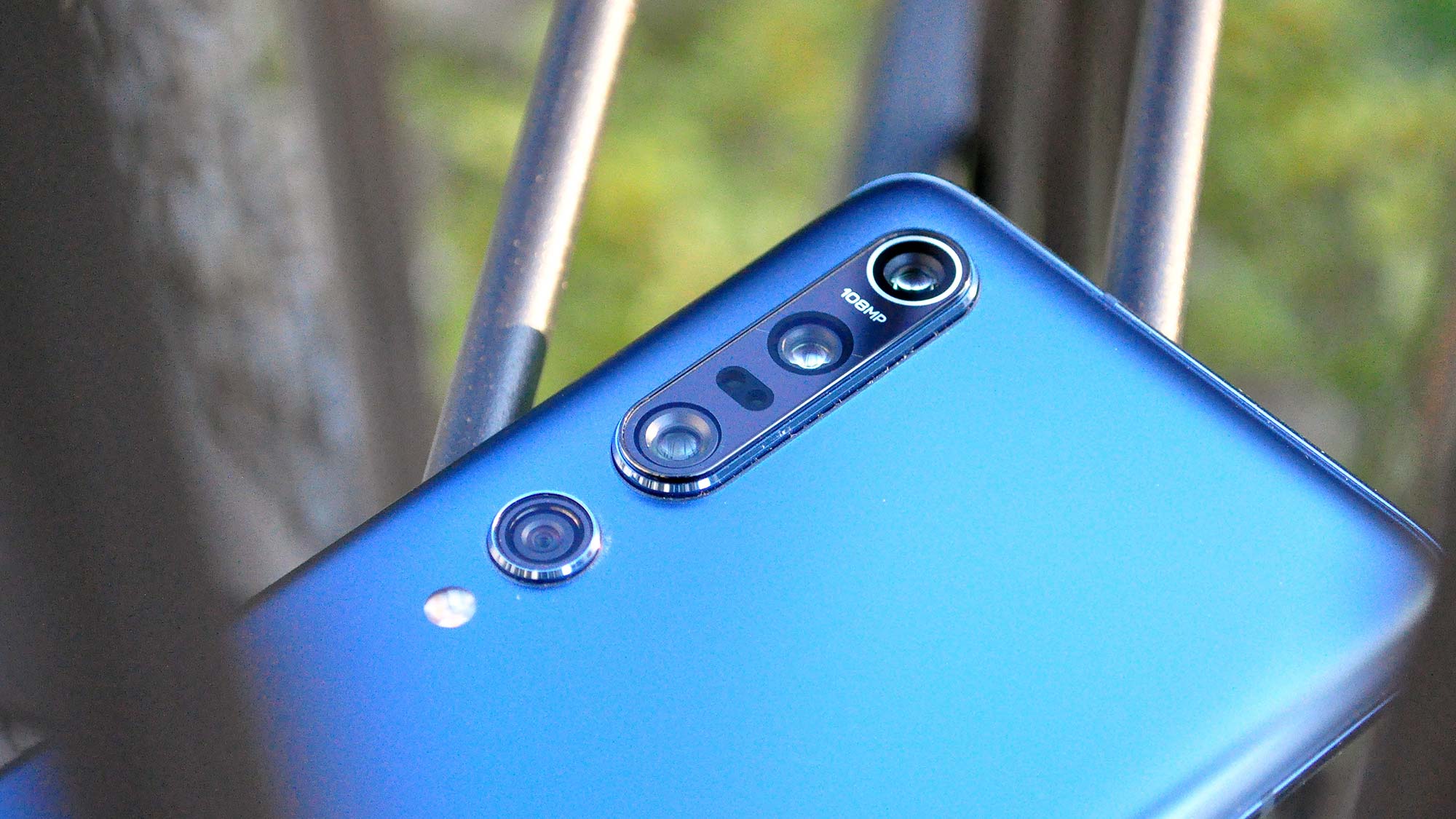
That camera module is one of two of the Mi 10 Pro 5G’s only distinctive design traits. The other is its duplication of speakers. Not only will you see a set of drilled holes on the bottom, but there’s another along the top edge as well. Rather than using the earpiece for front-firing sound, the Mi 10 Pro 5G shoots audio out its sides when you’re holding the device in landscape orientation. And the speakers get awfully loud, too.
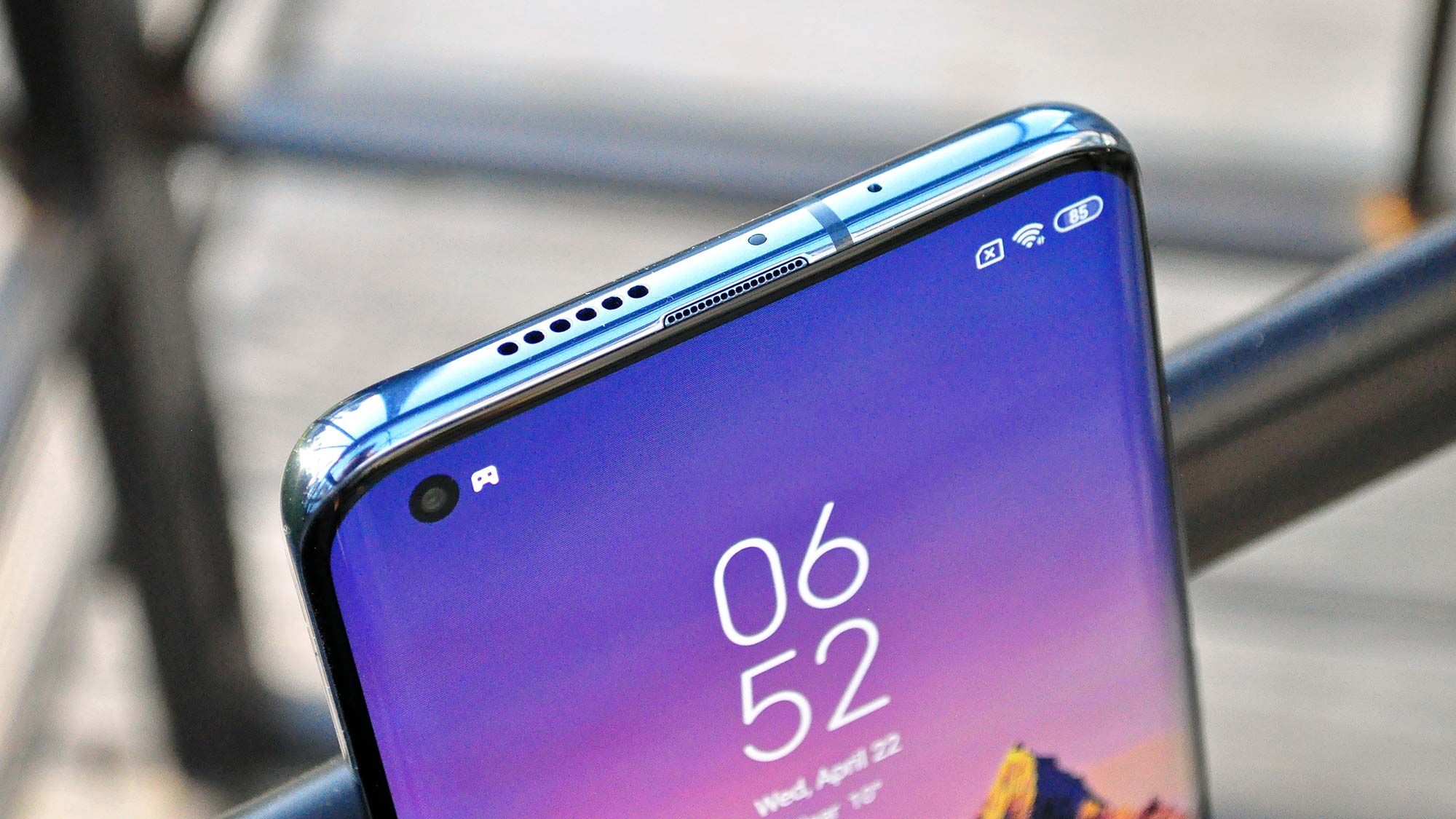
But there’s a problem. When you’re gaming or watching a film, it’s only natural that your palms will cradle the phone at exactly both spots in which the stereo speakers sit. This isn’t an issue for devices that place one driver behind the earpiece and another in the frame. But when both are housed in the frame, then you have a bit of a dilemma. There were numerous occasions in which I was playing Fortnite on the Mi 10 Pro 5G and tightened up my grip for a firefight only to have the phone sound like it had immediately plunged to the bottom of a pool.
Oh, and speaking of pools, here’s something else: The Mi 10 Pro 5G, despite its four-digit sticker shock, doesn’t boast any IP rating for water resistance. All you get is a liquid-repellent nano-coating that might fend off some rain or a spilled drink, but isn’t going to save your phone from a dive. One of the best waterproof phones this is not.
Xiaomi Mi 10 Pro 5G review: Display
- 6.67-inch OLED
- 2340x1080 resolution
- 90Hz maximum refresh rate
It’s becoming increasingly common to see fast refresh-rate displays in flagship phones, and the Xiaomi Mi 10 Pro 5G follows that trend with a 90Hz, full-HD AMOLED panel that delivers smooth animations and either realistic or robust colors, depending on the display profile you select.

The Mi 10 Pro 5G’s screen might not quite match the 120Hz refresh rates and quad-HD resolutions of the Galaxy S20 series and the OnePlus 8 Pro, though I don’t consider that a loss worth pining over. Animations at 90Hz are still far more fluid than what you get from conventional 60Hz displays, and make the entire experience of using the phone tangibly more immediate and responsive. More pixels and faster refresh rates also exert an adverse affect on battery life, and the Mi 10 Pro 5G happens to last very long on a charge — but more on that later.
I was dazzled by the Xiaomi Mi 10 Pro 5G’s screen while watching the latest trailer for the upcoming James Bond flick, No Time To Die. Bond’s stunt-driving antics wheeling an Aston Martin DB5 through the sun-kissed Italian town of Matera looked especially dramatic thanks to the panel’s excellent dynamic range.
But the Mi 10 Pro 5G’s display can get awfully bright too, with a peak full-screen brightness of exactly 800 nits. That’s just shy of the Galaxy S20 Plus’ 847 nits, though I was hard pressed to notice a difference in visibility between both devices while using them outside on a sunny day.
The Mi 10 Pro 5G sports a range of display modes, from Original — which is more natural and tuned to the sRGB color space — to the more vivacious Saturated mode that lifts those hues into the stratosphere.
The default Auto mode, which is somewhere in between, delivers a picture that compares nicely with what the OnePlus 8 Pro offers; with this configuration, the Mi 10 Pro 5G rendered 109.6% of the DCI-P3 color space, compared to the slightly bolder 116.9% of the premium OnePlus handset. However, the Mi 10 Pro 5G’s colors do appear to be slightly more accurate, as it notched a 0.22 score in the Delta-E test, where numbers closer to zero are better. The OnePlus 8 Pro finished at 0.26.
Xiaomi Mi 10 Pro 5G review: Camera
- Triple-lens rear camera: 108MP wide (ƒ/1.7); 20MP ultrawide (ƒ/2.2); 12MP “portrait” 2X telephoto (ƒ/2.0); 8MP 10X lossless telephoto (ƒ/2.0)
- Front camera: 20MP (ƒ/2.0)
Samsung’s 108-megapixel camera sensor is reaching more models from other phone makers. Not only is it featured in the quad-lens Motorola Edge Plus, but it also headlines the Xiaomi Mi 10 Pro 5G’s four-lens stack.
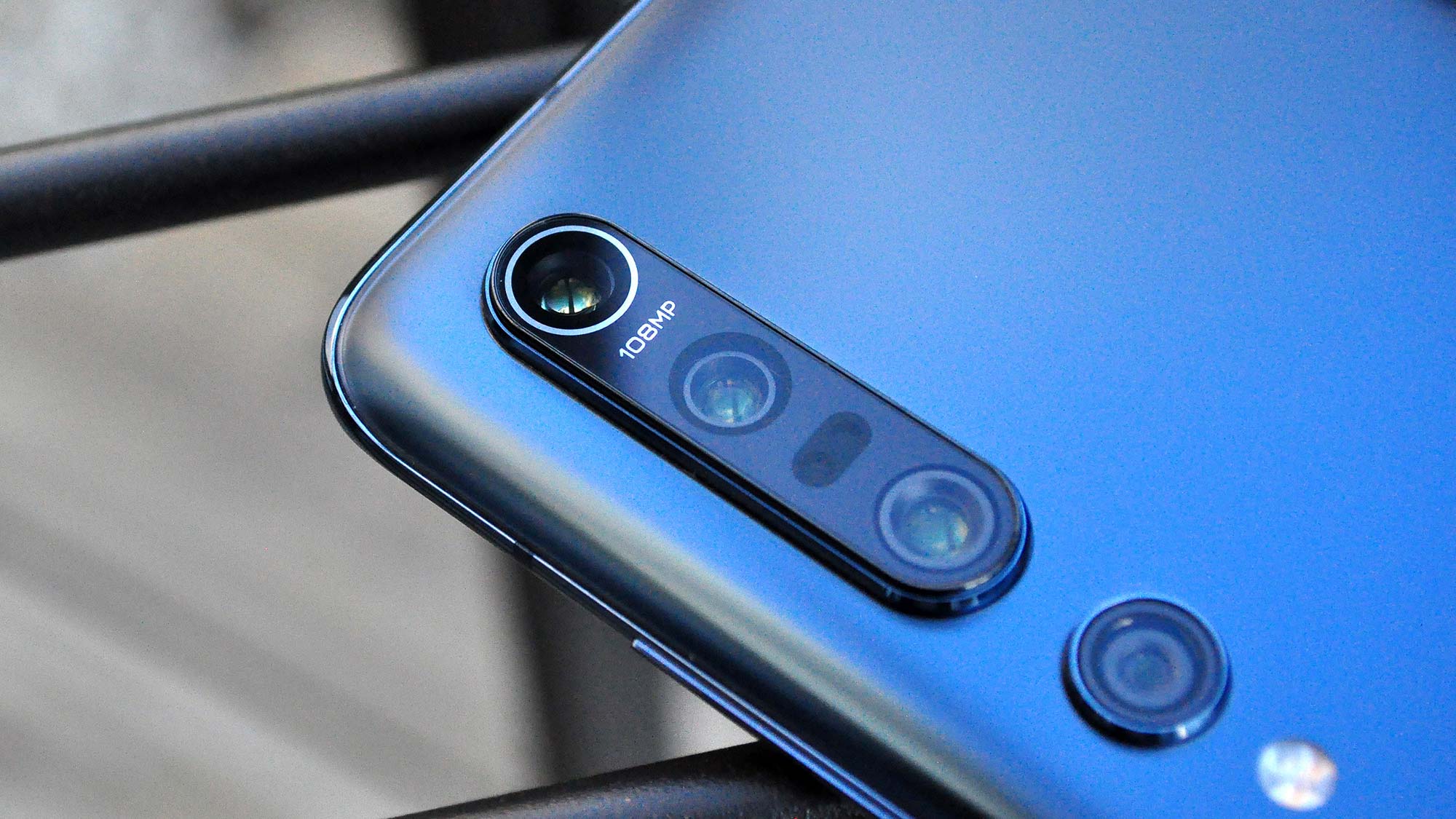
Xiaomi has flanked that super-high-resolution shooter with three other lenses: a 20-MP ultrawide optic, and, strangely, two telephoto cameras. One is rated at 12 MP and touts 2x optical power, and is used for shallow depth-of-field portraits; the other captures 8 MP shots but can see further, with up to 10x lossless zoom. A 20-MP selfie camera rounds out the repertoire.
If you leave that main 108-MP sensor to its own devices, it’ll capture binned 27-MP shots that allow more light to reach the sensor. The results are good, but not perfect; if you look closely, you’ll notice the wood fibers at the center of the torch are a bit blurry, and not quite in focus. The Galaxy S20 Plus didn’t suffer the same issues getting everything in the middle of the frame all nice and crisp, and avoided the smoky, warm cast over the background as well.
But if you ratchet the Mi 10 Pro 5G’s main shooter up to 108 MP, it can take some pretty remarkable images you can just keep zooming into for days. This suburban scene may not look particularly exciting, but I have to stress that in this instance, Xiaomi’s device nailed the white balance, reflecting the somewhat cloudy conditions of the afternoon. The S20 Plus — which was set to its full-resolution 64MP mode for this shot — delivered a very sharp result, though the contrast is a bit too dramatic and the sky more of an idyllic blue than it really was in actuality.
The Mi 10 Pro 5G’s ultrawide optic delivered a less praiseworthy result, clearly suffering some distortion at the fringes and sucking all the depth out of the shadows. The boosted colors in both shots are owing to the fact that both handsets’ AI scene optimization modes were turned on. And while the Galaxy’s version of events isn’t perfect either — the trees have a very eerie glow to them — the more natural saturation and contrast from Samsung’s phones earns the S20 Plus the thumbs up.

That ultrawide optic is the same one the Mi 10 Pro 5G employs to capture macro shots. My colleague Philip Michaels isn’t a fan of dedicated macro lenses, and my sentiments echo his. However, the Mi 10 Pro 5G is different from most macro-enabled phones. Because the camera responsible for those hyper-close shots also serves double duty for ultrawide photos, I don’t mind Xiaomi’s inclusion of a macro mode here. In fact, I’m decently pleased with the intricate texture the Mi 10 Pro 5G can convey in the leaf in the example above, using that special lens.
Overall, though, I came away far more impressed by the Mi 10 Pro 5G’s zoom camera, which uses a hybrid of optical power and software to deliver what Xiaomi calls “lossless” 10x zoom. Both shots of a street sign you see above were captured using 10x zoom on the Mi 10 Pro 5G and the Galaxy S20 Plus, but the Mi 10 Pro 5G’s example is noticeably more detailed, with better color and sharpness. Xiaomi’s phone is able to capture the paint chipping away from the sign within the letters — a detail Samsung’s flagship misses. I wouldn’t consider either “lossless," though it's still impressive.
To test the other telephoto lens on the Mi 10 Pro 5G — the one used for portraits and bokeh shots — I asked a friendly bear to smile for the camera. The Mi 10 Pro 5G excelled here as well, churning out a brighter image that more accurately separated the foreground from the background, and crisply rendered our stuffed friend’s fur. The Galaxy S20 Plus applied some blur to his ears and totally blew out the light from the window in the distance — a detail Xiaomi’s camera navigated better.
When things get dark, you’d probably expect to turn to the Mi 10 Pro 5G’s Night Mode to inject some light and detail into dim scenes. Unfortunately, that’s not exactly what happened when I snapped a photo of a fireplace in an otherwise pitch-black room. The way Xiaomi’s software selectively applies color — like how the fire enveloping the embers below is blue, but the large flames above are off-white — is admittedly captivating, though hardly realistic. And while the S20 Plus’ take isn’t perfect either — it’s generally noisier and washed out in places — at least its fire feels warm and inviting, and not quite so spooky.
Xiaomi Mi 10 Pro 5G review: Performance
- Qualcomm Snapdragon 865 CPU
- 8GB LPDDR5 RAM
- 256GB non-expandable storage
The combination of Qualcomm’s Snapdragon 865 system-on-chip and the 8GB of fast LPDDR5 RAM in the Mi 10 Pro 5G ensures a speedy and fluid user experience, whether playing games or just swiping around Android.
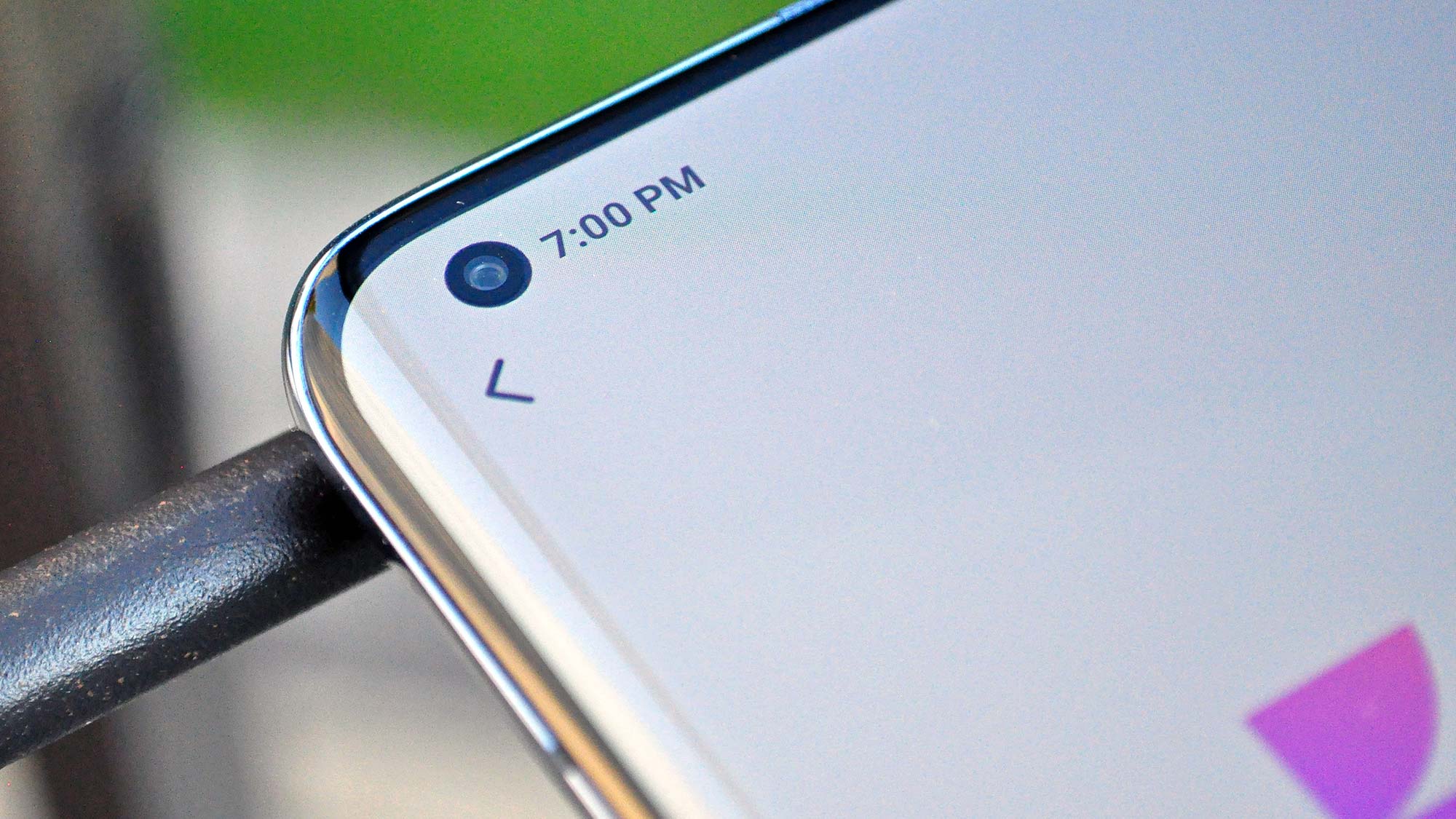
Unsurprisingly, the Mi 10 Pro 5G’s performance is right in line with rival handsets that pack similar hardware. In Geekbench 5, a test that measures overall system performance, the Mi 10 Pro 5G delivered a multi-core result of 3,300 points, which compares well to the OnePlus 8 Pro (3,379) and Galaxy S20 Plus (3,076). The A13 Bionic chip in the iPhone 11 Pro (3,509) remains the performance champ.
Turning to graphics performance, the Mi 10 Pro 5G produced 1,294 frames at 20 frames-per-second in GFXBench’s Aztec Ruins OpenGL test for high-tier phones. That result is dead even with the OnePlus 8 Pro (20 fps) and a tick behind the Galaxy S20 Plus (21 fps). Indeed, the Mi 10 Pro 5G handles demanding titles like Fortnite about as well as any other phone; you might observe a handful of dropped frames here and there at full resolution, but the experience is largely consistent, smooth and pretty.
Xiaomi Mi 10 Pro 5G review: Battery and charging
- 4,500-mAh battery
- 50-watt wired charging, 30-watt wireless charging
- 13 hours, 29 minutes in Tom’s Guide’s battery test
Smartphone batteries are getting bigger and bigger all the time, and so there’s seemingly nothing special about the Mi 10 Pro 5G’s 4,500-mAh pack — until you witness how long it lasts on a charge.
Xiaomi’s flagship averaged an extremely impressive 13 hours and 29 minutes on Tom’s Guide’s custom battery test, which measures runtime while streaming websites endlessly over an LTE network. That result was compiled over four tests, with the phone set to 60Hz mode for maximum efficiency.
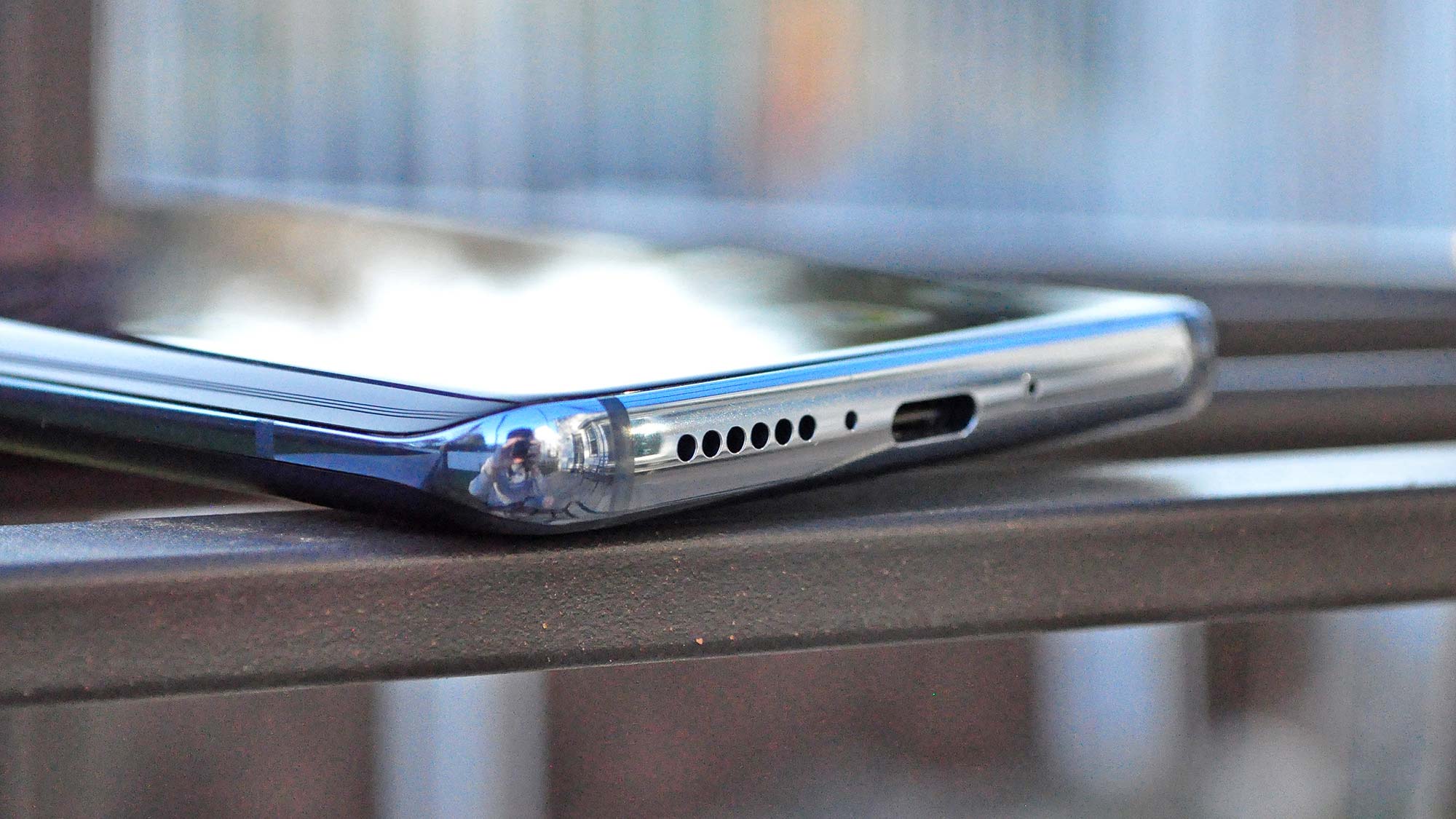
That isn’t just better than Sansung’s latest flagships — it mercilessly trounces them. The similarly-priced Galaxy S20 has a battery that is 500 mAh smaller, but clocked just 9:31 — four hours less than the Xiaomi. The S20 Plus, which has a battery with identical capacity to the Mi 10 Pro 5G’s, barely fared any better, at 10 hours and 31 minutes. Even the OnePlus 8 Pro, one of our best Android phones, managed 11 hours and 5 minutes. That’s still awfully good, but incomparable to the Mi 10 Pro 5G which ranks high among the devices with the best phone battery life.
Xiaomi packs a 65-watt fast charger in box with the Mi 10 Pro 5G, yet the phone only supports a maximum of 50 watts. That’s a bit strange, but regardless the company claims that users should see the battery gauge go from empty to 100% in just 45 minutes. Unfortunately, given that our model shipped with an EU charger, we’re unable to verify that claim. For what it’s worth, the Mi 10 Pro 5G can also top up wirelessly at 30 watts, which equals the wireless charging speed of the OnePlus 8 Pro.
Xiaomi Mi 10 Pro 5G review: Software and special features
For those who have never used a Xiaomi phone before, the company’s MIUI interface is a bit of a surprise when you first begin poking around. The Mi 10 Pro 5G comes with Android 10 out of the box, though it also has MIUI version 11 installed over top of it, which makes for an experience that is as far away from stock Android as what you’ll find in any Android phone.
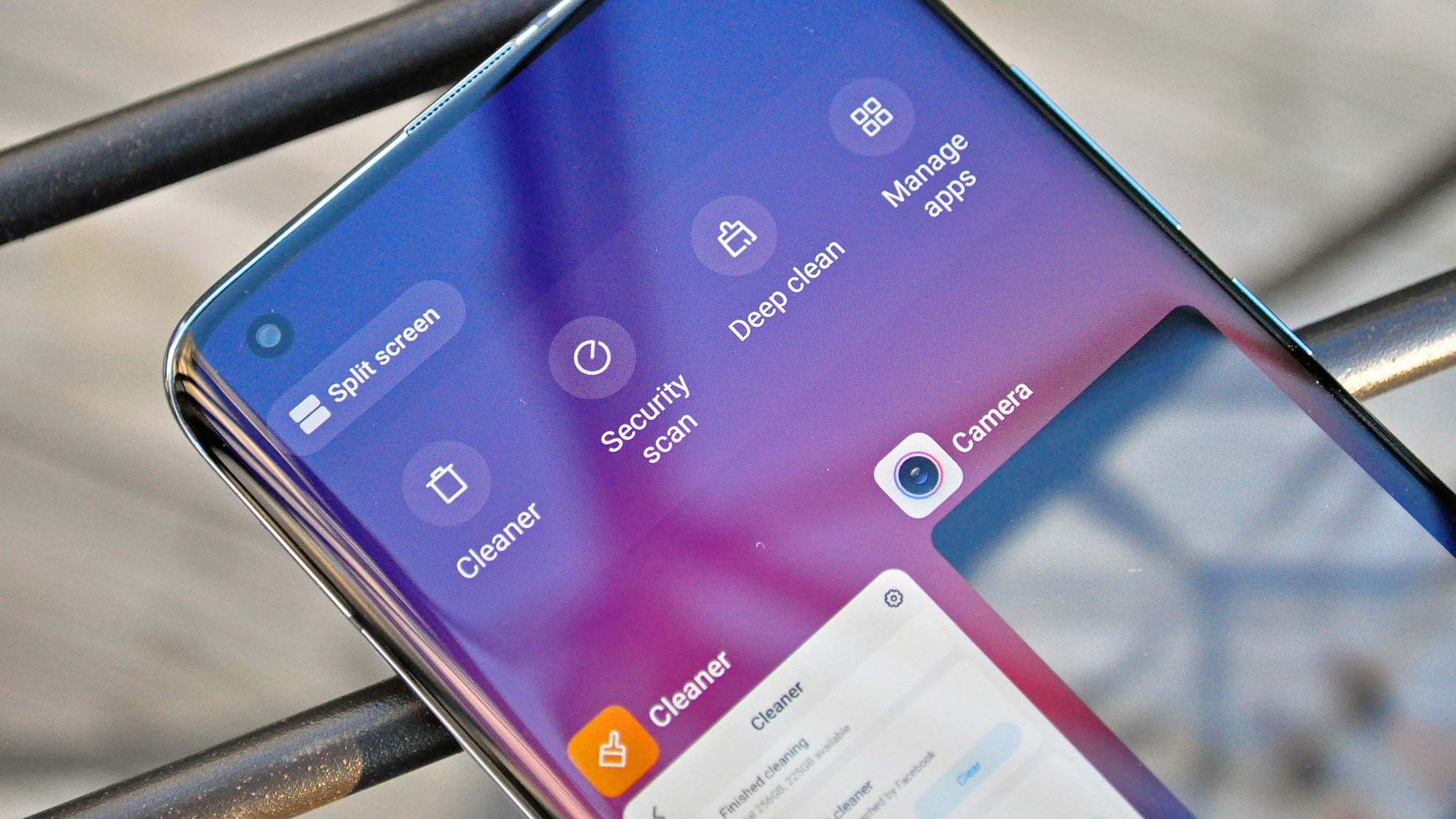
For one, there’s no app drawer, and so a swipe up from the shortcuts tray on your home screen brings up a page within Xiaomi’s custom browser featuring a Google Search bar and various YouTube videos and news stories the phone thinks you may find useful. The recent apps screen has a tiled look to it, rather than the cards stacked sideways that you may be more familiar with from iOS and conventional Android. On that screen, you’ll also find options to either “clean” or “deep clean” your Mi 10 Pro 5G, which seems a little redundant.
Speaking of redundancy, there are quite a lot of tools on the Mi 10 Pro 5G dedicated to phone maintenance. Aside from those two tools, you also have RAM Jet, which, as far as I can tell, just plays a little animation of a rocket ship every time you worry a greedy background app might be hogging memory on your device. There’s even a Mi Community app, where you can offer advice or pose questions to other users, and keep up on the latest news surrounding Xiaomi’s phones.
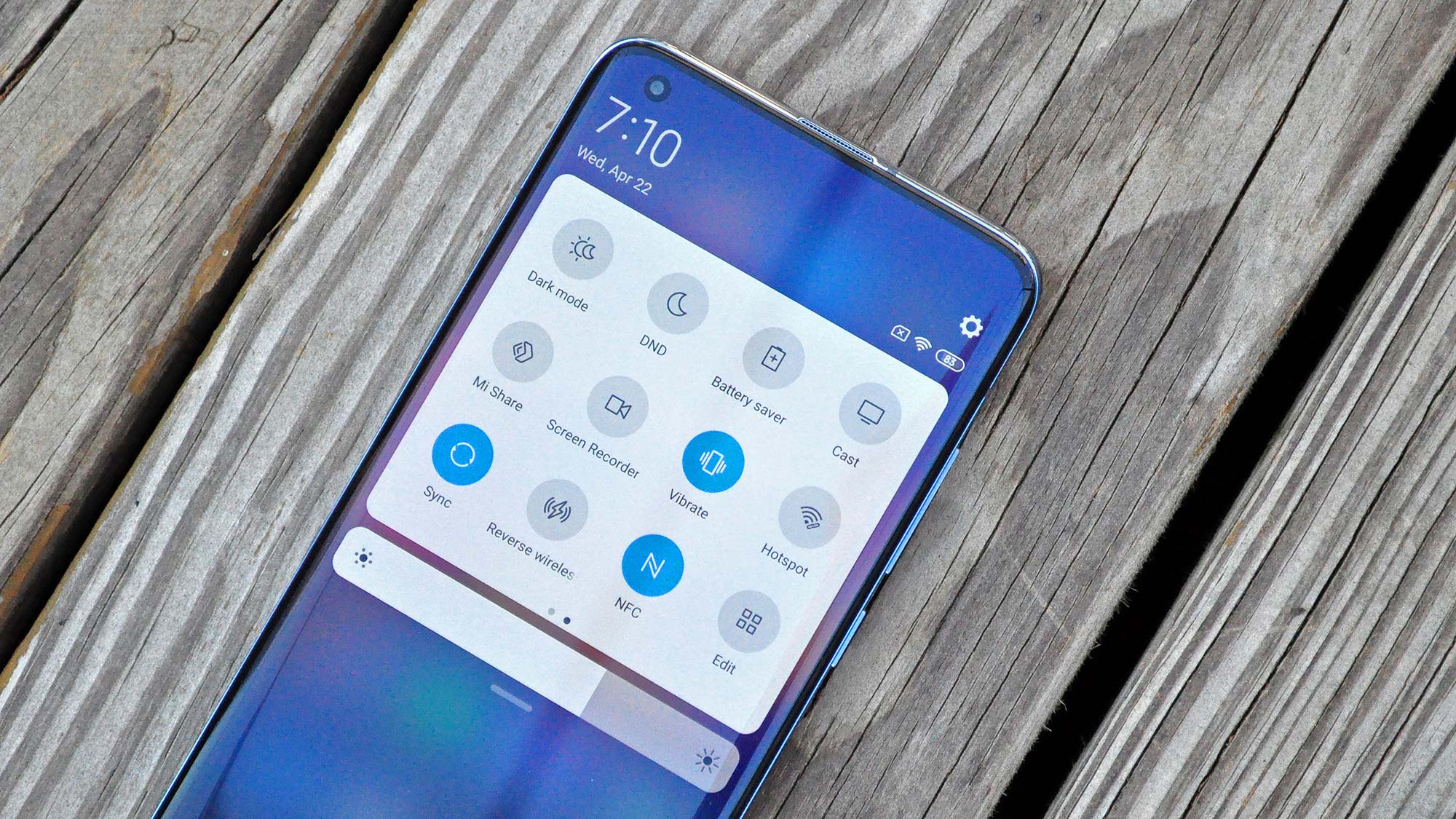
The focus on optimization feels a bit frivolous given that modern phone operating systems are already quite good at prioritizing tasks and taking care of all the back-end stuff so users don’t have to. Nevertheless, I can excuse that window dressing. What’s less excusable is the bloatware that the Mi 10 Pro 5G sports from the moment you boot it up for the first time, which is unexpected for an unlocked phone.
There are five games, all of which are ad-supported: Block Puzzle Guardian, Crazy Juicer, Dust Settle, Bubble Story and the hilariously-named Bubble Shooter With Friends. And in the More Apps folder, you’ll find Facebook, WPS Office, Netflix and LinkedIn. Usually, when you pay $1,000 for a phone directly from a manufacturer, you aren’t forced to do spring cleaning from day one, and so the Mi 10 Pro 5G regrettably feels a bit more like a subsidized budget handset in that sense.
The software on Xiaomi’s phone merits two points of praise: First, the Mi 10 Pro 5G’s haptics are surprisingly quite nice. The in-screen optical fingerprint sensor works quite well, but my favorite thing about it is actually the “hummm-pop” that happens as you authenticate, which offers a pleasing bit of feedback every time you unlock your Mi 10 Pro 5G. I also enjoy the feedback when typing, which evokes the excellent keyboard haptics on Google’s Pixel 4.
Second, it should be noted that Xiaomi’s flagship is one of an endangered species of handsets in the modern era to feature an IR blaster, meaning you can use it as a universal remote for just about any television. It’s a really neat inclusion you don’t often see anymore, and allows the Mi 10 Pro 5G to easily rank among our admittedly short list of the best phones with IR blasters.
Xiaomi Mi 10 Pro 5G review: Verdict
If the Xiaomi Mi 10 Pro 5G were easy to purchase all around the world, I’d recommend it as a no-brainer Samsung Galaxy S20 alternative for anyone concerned about battery life. Not only does the Mi 10 Pro 5G look like Samsung’s flagship, but its cameras, display and performance are comparable, too. There isn’t much buyers will give up here; in fact, they only stand to gain hours and hours on a charge.
But that caveat — ease of purchase — is why the Mi 10 Pro 5G is not a device we can wholeheartedly recommend to everyone reading this review. On its merits alone, this is indeed a very good flagship phone, and one of the best Android phones of the year. But importing one if you live outside Europe or Asia is risky, given that the device doesn’t support all the necessary bands carriers use west of the Atlantic. And even if the Mi 10 Pro does connect to your network’s towers, 5G support is sure to be spotty, given the emerging nature of those networks and the fact that different carriers employ different bands for those connections, too.
It also doesn't help Xiaomi's case that a string of reasonably-priced premium phones, like the Samsung Galaxy S20 FE and OnePlus 8T, are on the horizon and look to beat the Mi 10 Pro 5G from a performance-per-dollar standpoint.
And so, the Xiaomi Mi 10 Pro 5G ends up feeling like a great phone without a good home, at least for prospective customers in the Americas and the U.K. However, if you reside in a place where the Mi 10 Pro 5G is guaranteed to work as designed — or better yet is officially sold — you shouldn’t hesitate to buy one. It really is that good.
Adam Ismail is a staff writer at Jalopnik and previously worked on Tom's Guide covering smartphones, car tech and gaming. His love for all things mobile began with the original Motorola Droid; since then he’s owned a variety of Android and iOS-powered handsets, refusing to stay loyal to one platform. His work has also appeared on Digital Trends and GTPlanet. When he’s not fiddling with the latest devices, he’s at an indie pop show, recording a podcast or playing Sega Dreamcast.
-
ElectricVance Just to answer one of your concerns, the reason for the 65W brick for a 50W phone was so that people that used the Xiaomi notebooks wouldn't need 2 different bricks.Reply

